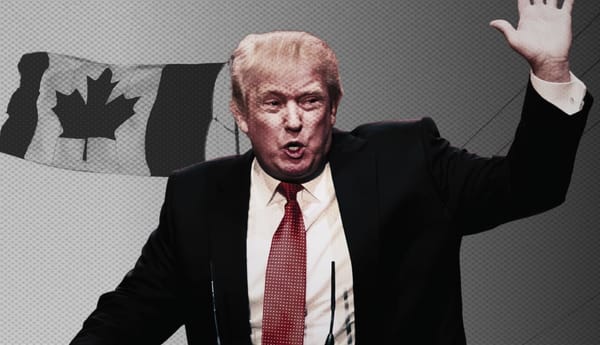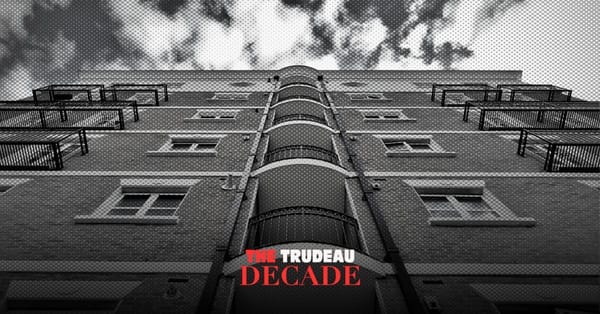Politicians are heralding Canada’s 2021 Census as groundbreakingly inclusive. Liberal MP Hedy Fry called it “the most inclusive census in our history,” while Minister of Innovation, Science and Industry François-Philippe Champagne wrote that it will create “a stronger, more inclusive Canada.”
As the product of a series of consultations, it truly might be the most inclusive census ever, given it asks participants about both sex assigned at birth and gender. The StatCan factsheet about the census states, “To better reflect how some Canadians describe themselves and to address the gaps in information about Canada’s transgender and non-binary population […] Statistics Canada has developed a revised sex at birth variable and a new gender variable.”
Yet despite being a step forward for trans people, this census is far from perfect. Here are three major flaws with the census, and potential solutions that can be implemented for the next one.
Ask For Trans Identity, Not Birth Sex
Problem: The census asks, “What was this person’s sex at birth?” The clarification is: “Sex refers to sex assigned at birth.” The choices are male and female. This poses a number of issues.
First, there is no “intersex” choice. (StatCan says this is due to the intersex population being too small to matter, and often not being designated intersex at birth.)
Second, if you want to count the number of men, women and non-binary people, you don’t need to ask about sex to do so.
Changing your sex designation as a trans person is a hassle, but Canada is broadly alright (if expensive and bureaucratic) at letting you amend information. Most documents and records — like your passport, provincial ID card, driver’s license and provincial health card (if applicable) — will be updated with the correct sex.
Imagine spending years fixing all your documentation to match who you are, and then still having to answer a census question that ignores all that. It tells you that your sex, as declared on every piece of ID you have, is inaccurate: your “true” sex is still whatever a doctor assumed it was when you were born based on what genitals you had.
Transitioning medically also means doing things to your body that a cisgender person doesn’t experience. “Sex” isn’t a single characteristic: it’s a broad grouping of related things, like typical ranges of hormone make-ups, typical chromosomes, typical genitalia, expected reproductive functions, secondary sexual characteristics and so forth. Trans people change those things. And not all trans people are going to have identical experiences that can be captured by stating that their birth sex is one thing and gender identity another. So asking trans people to list their biological birth sex as male or female isn’t just hurtful — it’s wrong.
Solution: Don’t have a question about assigned birth sex.
StatCan says that sex is being included for “historical comparability of the data.” Yet the census gets updated all the time. The ways we talk about race have changed over the last few decades, for example, and the census has updated its questions and potential answers somewhat (though nowhere near enough) to reflect that.
So while swapping to asking solely for gender might make historical comparisons a little less simple — and could conflate gender and sex — it will provide more accurate data going forward. Moreover, for the approximately 99 per cent of the population whose sex and gender match, it doesn’t matter which one you ask for.
Instead of birth sex, ask for people’s gender, and include an opt-in question such as, “Do you identify as transgender?” with a yes or no box. Making the trans question optional also means people can opt-in to revealing this information; it may well collect more responses from people who are, say, comfortable identifying as trans men but can’t fathom describing their birth sex as “female.”
The one drawback of this is that it wouldn’t capture information on how many people who are assigned male or female at birth identify as non-binary. A recent paper on gender information management recommends differentiating between non-binary people of different birth sexes, who “may also have significantly different needs and experiences.”
I recognize this as a potential flaw from a data collection standpoint, though it doesn’t faze me from a gender-affirming one. If the census is fine forcing “a very small proportion” of intersex people to pick a binary sex option, then they should be fine letting non-binary people not reveal their birth sex.
Add More Non-Binary Gender Options
Problem: The census lists possible genders as “male,” “female” or “please specify.” Data collection means the answers to this question are going to be “male,” “female” and then a whole bunch of write-in answers. Are you going to accurately collect “nonbinary” and “non-binary” and “NB” and “enby” and every other spelling permutation into the same group?
What about those with specific cultural gender identities like Two-Spirit or Hijra or Fa’afafine — are they being included in the wider non-binary umbrella or given their own separate categories? And what of the salty TERFs and transphobes who use the box to write-in things like “Apache attack helicopter” in tired attempts to be edgy — how is that data being used to count non-normative genders when there’s only one category for all of them?
Positioning the question as “male,” “female” and, effectively, ‘other,’ means ‘other’ gets devalued as a category. For people who declare a birth sex and then a gender beyond male or female, their gender will likely be disregarded in favour of birth sex information. We see that already, with the census forcing parents to describe their non-binary children as either sons or daughters. What’s the point of including alternate gender identities if your system intrinsically excludes them?
Solution: Add more possible options alongside the self-identification box.
The government’s own interagency self-identification questionnaire has seven gender options — man, woman, trans man, trans woman, Two-Spirit, nonbinary and gender fluid. This isn’t perfect either, due to the separation of trans men and women from cis ones (implying trans people aren’t “real”) as well as the lack of write-in options. But it’s strange that the feds can collect better information on their employees than the entire Canadian population.
Protect Respondents From Being Outed
Problem: Canada forces households to complete the census collectively. This means the sex and gender questions could out trans people to household members, which is a violation that can lead to ostracism, exploitation or violence. If someone isn’t open about their trans identity with the people they live with, it’s almost always out of concern for their own safety.
A trans teenager who isn’t out yet living with her conservative parents can’t self-identify her correct gender on the census. A trans man who’s living with roommates that don’t know he’s trans can’t answer on the census that he was designated female at birth. In both cases — one hiding your gender, one hiding what genitals a doctor said you had when you were born — the census may end up collecting inaccurate information and less useful data as a whole.
In an emailed statement, StatCan told me, “Any individual who has a concern with regard to security, confidentiality or privacy can request their own questionnaire. They can call the Census Help Line at 1-877-885-2021 to request their own secure access code and complete a form online, or request a paper questionnaire.” Yet that information, or any other tips on how people who fear being outed should respond to the census, isn’t publicly available.
Solution: Make it obvious that there’s an individual option for people concerned for their security, and make that option discreet.
The United Kingdom has a whole webpage that tells individuals they’re allowed to fill out a separate questionnaire from the rest of their household. It’s easy to find online, and was widely shared before the 2021 census by trans and non-binary activists.
The fact that it took a media request to find out that there was an option for individuals in Canada is ridiculous. And this option still involves a closeted trans person having to call a busy helpline, potentially outing themselves to call centre staff, trusting that the staff are aware of this policy, and making sure none of their household members overhear them. Loathe as I am to praise the deeply transphobic U.K. census, their individual access option is much better. You can even get the individual access code sent via text to avoid conspicuous letters.
The census is designed to be accessible, safe and secure. These protections should extend to trans people who rightly fear being outed. So, while the 2021 census is better for trans people than any previous ones, it’s far from perfect. We can celebrate steps toward inclusion while still demanding better treatment that more accurately reflects our lived realities.







